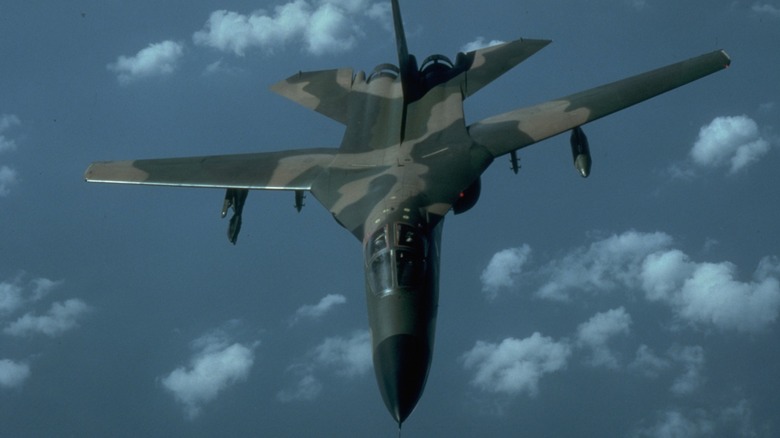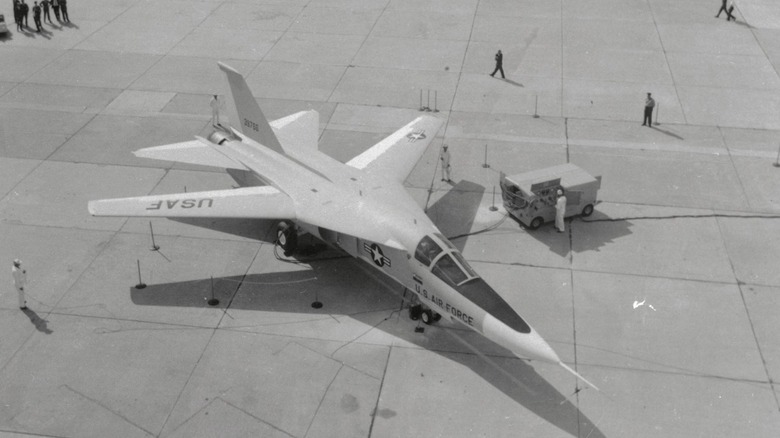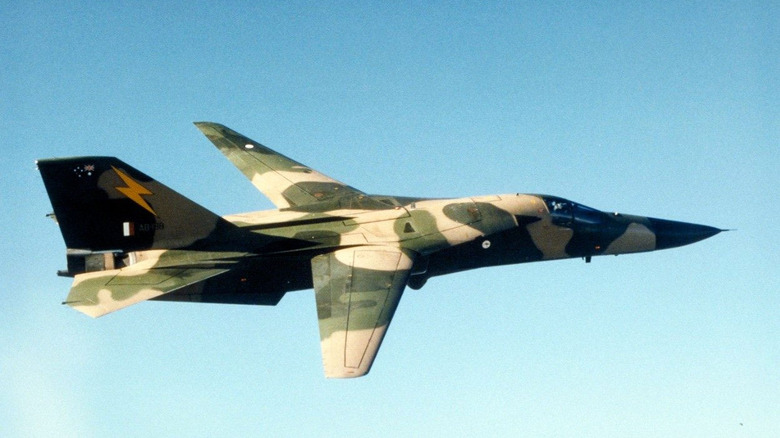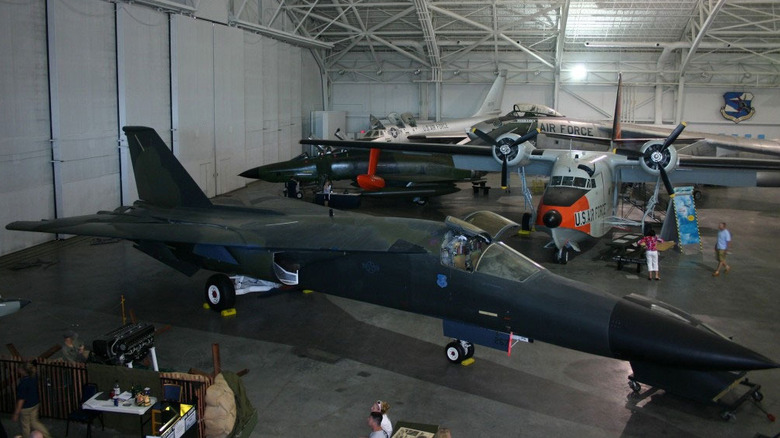Why Was The F-111 Aardvark Retired?
As one of history's most effective military jets ever created, the General Dynamics' F-111 Aardvark, also known as "Pig," didn't have a smooth initial flight during its development. This hybrid bomber and interceptor was initially meant to serve multiple roles for the U.S. Air Force, Navy, and its allies. While the U.S. Air Force would eventually use, iterate, and improve the bomber hybrid until the 1990s, the F-111 was rejected by the U.S. Navy and replaced by the F-14 Tom Cat.
In many ways, the story of the F-111 is incredibly similar to the modern F-35 stealth fighter jet, as that plane was also delayed for nearly a decade in an attempt to have a "one size fits all" option. Like the F-35, the F-111 would also have several models to serve its multiple goals, including the F-111A, F-111B, and F-111C. The aim to have a multi-use fighter jet that could fulfill the specific needs of each military branch meant that the plane had to be both highly specialized and reliable as a general fighter jet.
Eventually, in 1998, the F-111 Aardvark would officially be retired by the United States Air Force, as other, more advanced and specialized planes like the F-15E Strike Eagle, A-7 Corsair II, and the F-14 Interceptor dominated the skies. However, the importance and foundations of the F-111 Aardvark set can't be understated, as the design and technology would eventually help inspire modern military jet design.
A brief early history of the F-111 Aardvark
In the 1960s, General Dynamics and then United States Secretary of Defense Robert McNamara aimed to establish American air dominance by creating a multi-role supersonic combat aircraft capable of flying below enemy radar. To this aim, McNamara would create what was known as the Tactical Fighter Experimental Program, or TFX.
In 1964, the first production model of the General Dynamics F-111 Aardvark would take flight. The most notable feature of the craft was its variable-geometry wings that would shift mid-flight to reduce the plane's wingspan and streamline them into a triangular shape. While this wing design would go on to inspire modern-day jets, like the F-15 and F-35, it added considerable complexity and room for error in the 1960s.
Faulty parts due to poor manufacturing and increasingly stringent requirements from the Navy's F-111B version delayed the development of the Aardvark until 1968. Initially, 159 F-111s were delivered to bases in Southeast Asia, where they would eventually be used in flight tests and bomb strikes against the North Vietnamese, only to have poor results.
Instead, the military would use the F-100 Super Sabre and F-105 Thunderchief for bombing campaigns during the start of the conflict, though the F-111 would be used later. Even if the F-111 would eventually go on to broader use by the United States and its allies post-1973, it didn't have a great start.
The F-111 Aardvark had catastrophic flaws with tragic results
Though the F-111 Aardvark would go on to see combat in a multitude of military campaigns after 1972, a couple of flight tragedies tarnished the F-111's name early on. Specifically, this massive fatal flaw would see the wings of the F-111 rip off the chassis of the aircraft under certain conditions. This issue would be such big worldwide news that it would lead the Royal Australian Air Force (RAFF) to postpone their order for the aircraft.
On December 22, 1969, during a combat test at Nellis Air Force Base in Nevada, the left wing of the F-111A detached from the plane, which caused an uncontrollable roll of the craft. Though highly experienced, the pilots could not use their ejection seats in time due to the tumbling, resulting in the death of both crew members.
In February of the same year, the radar on another F-111 failed, causing it to crash into the side of a mountain and remain undiscovered till later that summer. There were also pre-existing issues with the plane's rear wings when put under fatigue tests in the United States and Vietnam, making the F-111 generally unsafe to pilot for a time.
General Dynamics fixed the issues and improved the F-111
Eventually, it was discovered that a manufacturing defect in the wing pivot fitting caused large cracks to form that would only grow worse over time. This crack resulted in a cascading catastrophic failure and is the primary reason the plane's wings fell off. Eventually, this, among the plane's other issues, would be resolved, and between 1972 and 1973, the first redesigned F-111 would finally be fully tested and approved.
Though early growing pains saw a diminished reputation for the F-111 Aardvark, it would go on to be one of the safest military bombers of all time, maintaining a 0.015 loss rate with only 77 losses after over 1 million flight hours. In 1998, the U.S. Air Force eventually retired the A-111, not because it wasn't useful anymore, but because other specialized planes like the F-15E Strike Eagle and B-1B Lancer performed needed operations more efficiently. Rather than stick with McNamara's TFX approach, the United States turned to various aerospace manufacturers to fill out a diverse fleet.
Interestingly enough, it looks as if the United States would then revert back to the TFX approach for the controversial Lockheed Martin F-35 program up until recently. However, today, it appears as if the U.S. is reverting back to a multi-manufacturer model, showing that everything — including military tech — is cyclical. In 2010, the RAAF officially retired the craft, making Australia the last operator of the iconic military jet.



